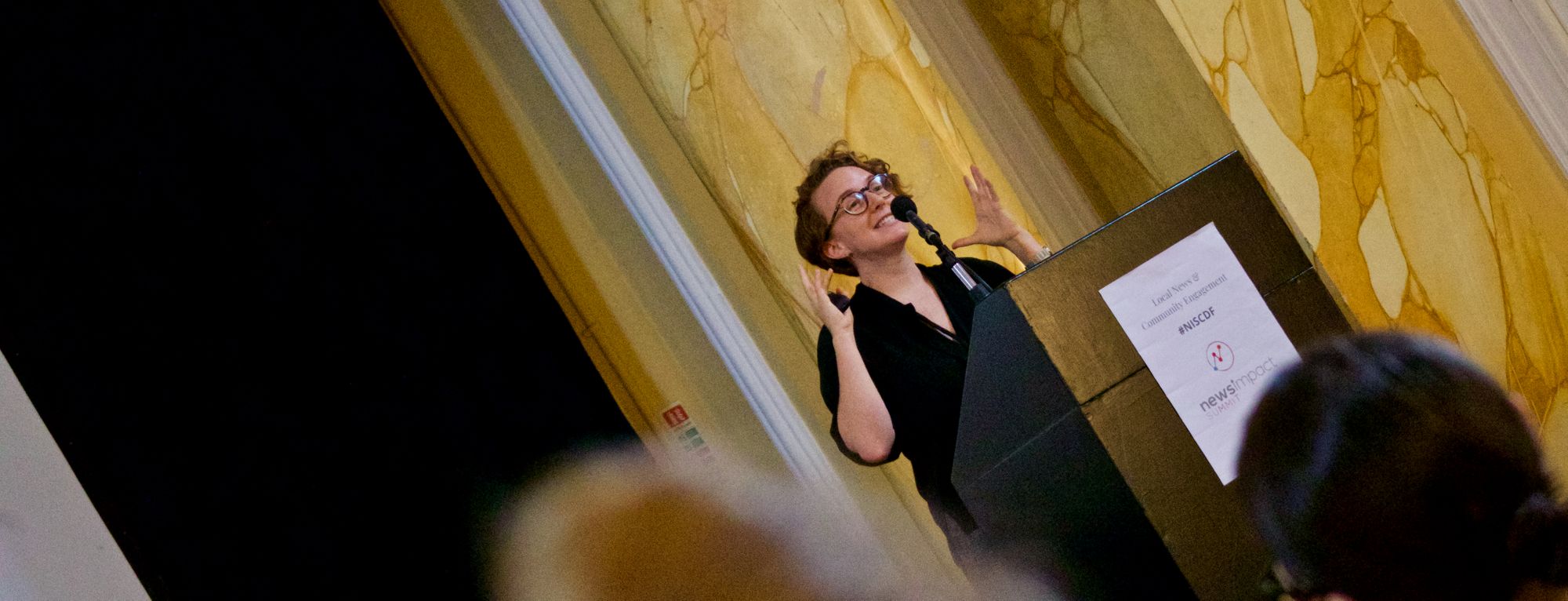Megan Lucero: Why do we need new models for news
Can we find a new model of collaborative journalism, working alongside existing local journalists, and the communities they serve?

Liveblogged notes from the opening session of News Impact Summit Cardiff in October 2018. Prone to error, inaccuracy and howling crimes against grammar and syntax.
Megan Lucero
Director of the The Bureau Local
The Bureau Local's collaborative newsroom launched 18 months ago - very much the new kids on the block. There are vital, important things happening in reporting in the UK right now, and we can learn from the current industry.
For me, it all centers back on the public interest - how do we continue to speak truth, to represent our communities. The Bureau Local is a collaborative group of news reporters around the country working towards that aim.
Do we really need a new model for news? Yes. I used to be in charge of putting data into a traditional newsroom. But I noticed that we were only interested in the headline figure, and were dumping the rest. But every single line in the spreadsheet represents people, communities, lives. How can we democratize that process?
Understanding the News Ecosystem
How can we benefit the ecosystem? Before you can tackle that, you need to know what the ecosystem looks like. And that needs to be done urgently - because we need new models - and we need them fast.
- Traditional models are collapsing - we are starting to question how much accountability there actually is now at a local level
- Digitised info has changed reporters’ breadth and depth - the amount of data is expanding exponentially, and they don't have the time or tools to deal
- Access to info is changing and so is our relationship with our communities - through fragmentation and alternative news sources
How do we fix this? We wanted to increase the number of public interest stories happening at a local level. And we are coming in to stand alongside local news reporters, not to save them. We wee very much inspired by the panama papers, where our assets around the world collaborated to tell an important story. We wanted that - but in one country.

Reporters alone cannot change the industry. We assumed that it would mainly be reporters - but we have 800 other members, as well as 200 journalists - these other members community minded citizens who wanted to participate in this process.
What have we learnt?
- Accountability needs participation from all players
- Make the available, accessible - local journalists were trying to access local data about cuts or spending - but it was all in PDFs or SQL databases. Theses are inaccessible to different groups for different reasons. Guide people through it - The Bureau Local is writing guides to help people through finding and accessing information
- Understand the power systems
- Reach and include audiences in new ways - we are journalists; we are here to tell stories of our communities. How can we do that if we don’t adapt to the new environment? How do we report with communities, not just on them.
A collaborative investigation revealed that 449 homeless people died last year. The problem with the investigation? Nobody was collecting the data. So the community started doing it. It was a nine month project. They worked with journalists, outreach workers, local doctors, grieving family members and more. It was a real validation of the model.
You don’t have to worry about every detail of the business model - we’re exploring this as we go.





